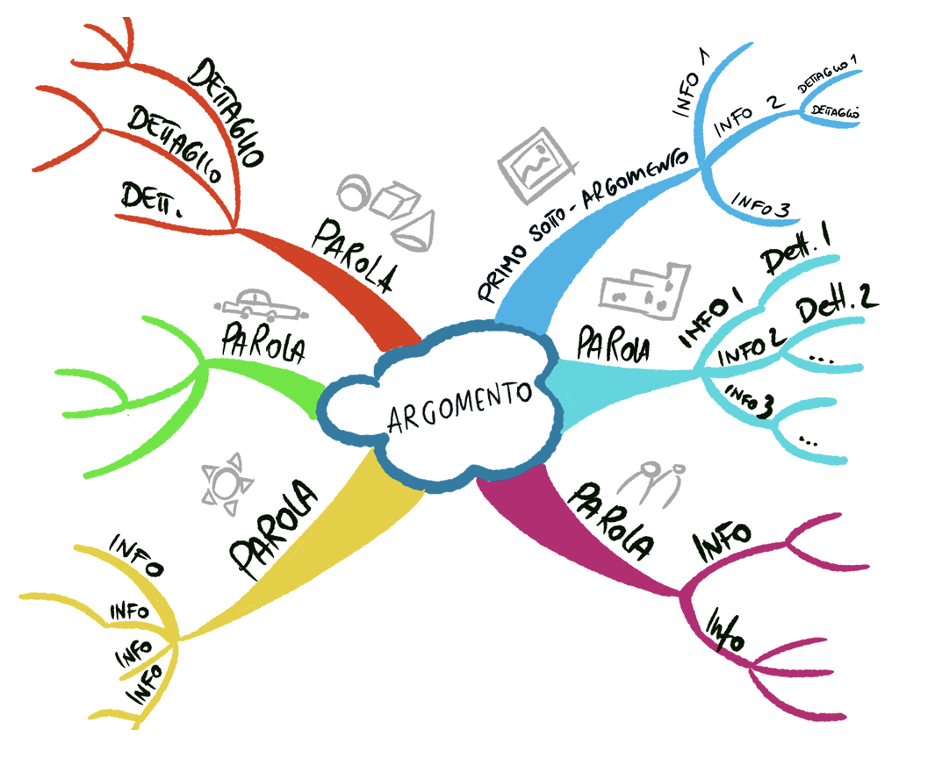What are memory techniques?
Memory techniques are methods for storing, in long-term memory, any kind of information as quickly and efficiently as possible.
Memorization techniques are not a recent invention. Already Marcus Tullius Cicero had invented a memory exercise for remembering his orations, the so-called Ciceronian Loci technique, which allows us to memorize lists of information by anchoring each item in the list to a point in the real space of our experience. Have you guys ever used this technique?
What are they?
There are so many memory techniques.
In our article we will focus on the most important techniques that can be learned and applied quickly.
1. P.A.V
The acronym P.A.V. stands for paradox-action-vivid.
Through this technique, to memorize anything, we must first turn it into an image; our brain stores it more easily.
Let's start with the paradox: we need to create an image that is distant from our reality; the more absurd it is, the easier it will be to remember.
This image must also contain an action; it must be in motion to better stimulate memory.
The scene painted in the mind must be vivid; to make it so, all the senses must be involved.
To use the P.A.V. technique, one must:
- avoid overly logical associations, otherwise the paradox would not arise.
- Avoid remembering many things with a single paradox
- try to make the image not too busy otherwise it will distract attention from the paradox
- Make the object unambiguous otherwise it will be easily confused with other objects
2. Phonetic conversion
Leibniz's phonetic conversion is an encoding system that allows abstract, difficult data to be transformed into easy-to-remember images. And, of course, it also allows one to go the reverse route.
It requires that each number, from 0 to 9, be associated with a consonantal sound so that each number sequence can be converted into words and even sentences (depending on the length of the digit you need to memorize).
Words and phrases naturally correspond to images, so this is how we relate back to the P.A.V. principle.

3. Mind Maps.
Mind maps are an easy tool to learn and applicable to any field of study and design.
Mind maps are constructed starting with a central core from which all other concepts then branch off into subcategories. The whole is built with keywords, i.e., those terms that have the ability to represent an entire concept by themselves.
Through the branches of the mind map, one builds the skeleton, the structure of the study topic and thus memorize the information in a systematic and comprehensive way, starting from general information, down to more punctual ones. Thanks to the mind map, it is easy and intuitive to remember the general outline from the beginning.
Although there are many software to create mind maps, you can start making them by hand. You have to follow a precise structure:
- Take a sheet of paper and lay it out horizontally. In the center draw the idea you have developed. For example, choose a word, such as "house," write it clearly and draw it in color in the center of the sheet.
- Add to this first element whatever you can tie to the main one, in a mechanism of association of ideas. You will have to ask yourself, "When I think of this topic, what comes to mind?
- After making the list, you can start with the model and sketch a branch for each idea. The branches (at least six) start from the central idea and go outward. You will need to draw them in different colors that are thicker and not straight (better to opt for curved lines): one branch for each word you come up with
- Each of the branches, in turn, can have forks, or sub-branches. The number of these will depend on how many ideas are related to the element you have drawn.
- Let the map branch out and extend freely.
- After that, add pictures and drawings to each branch-word.

Of course, one can study, learn and memorize even without memory techniques.
But the fact is that we are in a society where we need to learn more and more, because knowledge is growing at a dizzying pace.
If you want to keep up, if you value your time, memory techniques can really help.
Compared with traditional "make patterns and repeat" in fact, memory techniques allow at least 3-5 times faster recall speed. And even greater accuracy.
So if you invest some of your time today to learn them, you can save some of your learning time for a lifetime.
Nicole Di Salvo
Project Manager Digital Innovation Days
Federica Berandi
Contente Creator Trainee Digital Innovation Days
